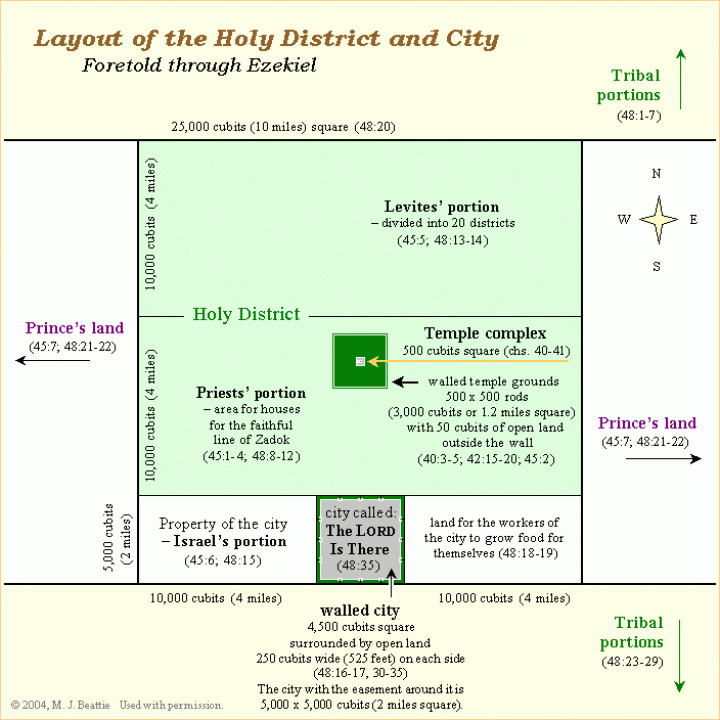Bible Commentary
Ezekiel 45
The Holy District and Feasts
 UCG.org
UCG.org
In chapter 42, we saw a "holy area" surrounding the temple complex that was a little over one square mile. Ezekiel is now told of a district surrounding this area that is 25,000 x 25,000 cubits (almost exactly 10 x 10 miles). The KJV uses "reeds" here, but the unit of measure is not actually given in the Hebrew. The NKJV says "cubits," which appears to be the correct rendering because the district would be unreasonably large if these measurements were using the full six-cubit measuring rod. There isn't that much land in the area, using the larger measure.
This area is also described in chapter 48, where more details are given, and between the two passages we discover that this "capital district" is divided into three main sections. One part is a 10,000-cubit- (4-mile-) wide strip that provides room for the priests' houses. The temple is contained in this portion (verses 1-4)—apparently with a 50-cubit easement outside the parkland wall to prevent anyone from building right up to it (see Ezekiel 45:2). Another section is also 10,000 cubits wide, and provides "twenty chambers" (probably referring to towns with their surrounding pasturelands, compare Numbers 35) for the Levites (Ezekiel 45:5). The final 5,000-cubit strip is for the city and the "whole house of Israel."
Stretching east and west from this 100 square mile district is land given to the "prince." In the same context God says that the Israelite leaders of that time would oppress His people no longer (verses 7-8). The people's land was not to be appropriated by the "government" (see also Ezekiel 46:18), which will have its own land and be responsible for providing certain representative offerings for the people out of the abundance owned by it (Ezekiel 45:17). Included in this are the festival offerings in the first and seventh months. We see in this section that God's Sabbath and feasts will be observed during the Millennium.
